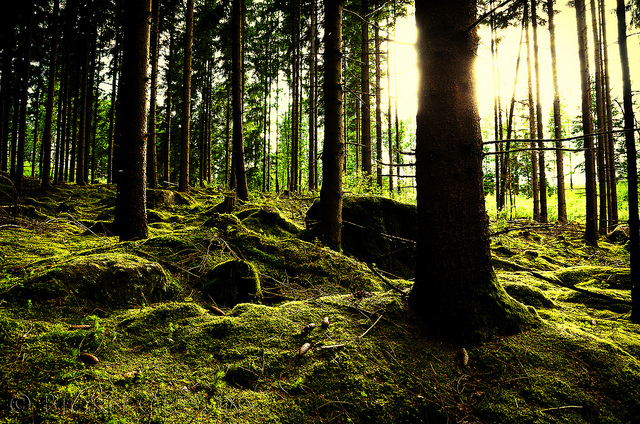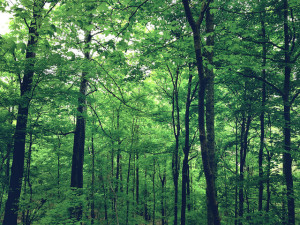The Green Economy and What It Means for Global Economics

Climate change has recently dominated global affairs, as scientific studies have projected alarming and continual rises in global temperatures that affect long-term global sustainability. Long term sustainability is defined by a variety of factors, such as agricultural viability, water and air security, and biodiversity conservancy, and recent threats to these life-sustaining processes have fostered a variety of new global initiatives, such as the Paris Conference and an emerging new market for renewable energy sources. One of the most promising solutions, however, is the World Wildlife Fund for Nature’s (WWF) Reducing Emissions from Deforestation and Forest Degradation (REDD+) program that is changing the economics of environmental conservation.
The REDD+ program is an initiative to reduce the production of carbon emissions from deforestation and forest degradation by compensating developing nations for maintaining their forests. Deforestation is one of the largest forms of carbon emission productions, accounting for 11% of the world’s production, which is comparable to the emissions produced by all the vehicles on earth combined. Despite this alarming fact, deforestation is occurring at a distressing and rapidly increasing rate, a fact which has already destroyed half of the world’s forests. Even in areas where forests seem to be relatively abundant, scientists are still worried about the effects of deforestation, as empty forests, which are areas that have not been completely deforested but lack organisms to carry out natural functions essential to a forested habitat, are an increasingly new phenomenon. Forests facilitate natural processes like pollination and the cycling of nutrients while also serving as natural barriers against soil erosion, a role which protects agricultural production and water sources. Finally, forests serve as carbon shields that sequester carbon and prevent it from entering the atmosphere, which is vital to today’s fight to halt climate change.
With a population of just 800,000, Guyana, a country in South America bordering Venezuela, Suriname, and Brazil, is primarily made up of nutrient dense rainforests that cover 85% of the country’s land mass. Guyanese forests comprise an area known as the Guyana Shield, which is considered a global priority in regards to conservation due to its pristine forests, fresh water resources, and rich biodiversity. The REDD+ program focuses on preserving these crucial areas, which are primarily located in developing nations, by encouraging developed nations who have eliminated a large portion of their natural forests to contribute to the preservation of these areas. In 2009, Norway and Guyana became the first two countries to pilot the REDD+ program, signing a contract that guaranteed Guyana an allotted amount each year from Norway to be used to “keep deforestation rates low.”

Following the agreement, the WWF partnered with various local and international organizations, such as the indigenous North Rapanui District Deveined Board (NRDDB), the Guyana Forestry Commission, the Global Canopy Program, and the Wai Wai community of Kanashen, to establish a community measurement, reporting and verification (CMRV) system to collect ground-level data in Guyana. The program trains individuals from local communities to calculate carbon stocks, record and monitor water-quality, and interview other community members to gauge environmental well-being. These ground-level measurements, which are continually updated, allow researchers to more accurately determine what is ecologically considered “forest” –a difficult feat using traditional methods such as satellite imaging– as well as to understand current conditions in these areas in order to identify and address problem areas. REDD+’s CMRV system in Guyana is linked with the country’s larger Monitoring, Reporting and Verification System (MRVS), which has allowed researchers to expand their data pool with continually updated data from the region. The REDD+ program’s data focus allows researchers and policymakers alike to take proactive steps in identifying and solving problems before irreversible damage occurs, such as in 2013 when researchers discovered alarming deforestation rates from the mining industry. Mining in the region, specifically gold mining, not only accounted for 90% of the deforestation rate in 2013, but it was also linked to the contamination of the region’s fresh water supplies. The REDD+ system allowed policymakers to take immediate action and contain the problem at its conception before irreversible damage occurred.
Beyond simply creating a more proactive system to contain and address alarming deforestation rates, the REDD+ program is also an economic tool that is providing developing nations with realistic and sustainable economic and social foundations for long-term growth. The REDD+ program seeks to implement natural, cultural, and human resource monitoring systems that protect and promote forest-dwelling communities, which tend to be indigenous communities. In Guyana, indigenous communities make up 10% of the population and own 15% of the land, and the REDD+ program’s goal is to provide these communities with the proper training and resources to not only maintain precious global resources but also their livelihoods and cultural roots, as communities within these regions are dedicated to the preservation of their environment for future generations. The Wai-Wai tribe, which manages 1.5 million acres of land or roughly 2.9% of Guyana’s land, was one of the first tribes to implement this new system in its community. Thus far, the Wai-Wai tribe has been pleased with the results of the project, as the program has allowed the tribe to improve its management and, therefore, preservation of the territory. One of the most notable improvements has been improved navigation in the jungle through GPS technology. Prior to the use of GPS technology, community members resorted to damaging methods, such as hacking trees with machetes to create trails, to avoid getting lost in the isolated and highly inaccessible jungle. GPS has improved their abilities to monitor these areas without harming their natural state. The success of the REDD+ program has allowed the WWF and the NRDDB to develop a capacity-building curriculum based on the training in Guyana that will be taught and implemented in other communities in the region and around the world.
The REDD+ program is one of many global initiatives seeking to solve the contemporary environmental crisis, and, while this crisis is alarming, it is also forcing the world to evolve and develop in unexpected ways, such as the creation of new technologies and socioeconomic policies that span beyond environmental issues. The REDD+ program represents both an environmental and socioeconomic solution that focuses on implementing sustainable and realistic practices in developing nations. The environmental crisis has highlighted the potential of developing nations and their relative abundance of natural resources, providing them with leverage over developed nations. This leverage, which can be seen in the contract between Norway and Guyana, has created a new type of economic transaction wherein developed nations must depend on developing nations to preserve existing natural resources that are crucial to global suitability. The future for these developing countries, such as Guyana, thus lies in compensation from other countries to maintain its forests, creating what is known as a green economy that has the potential to transform developing nations into global competitors.
